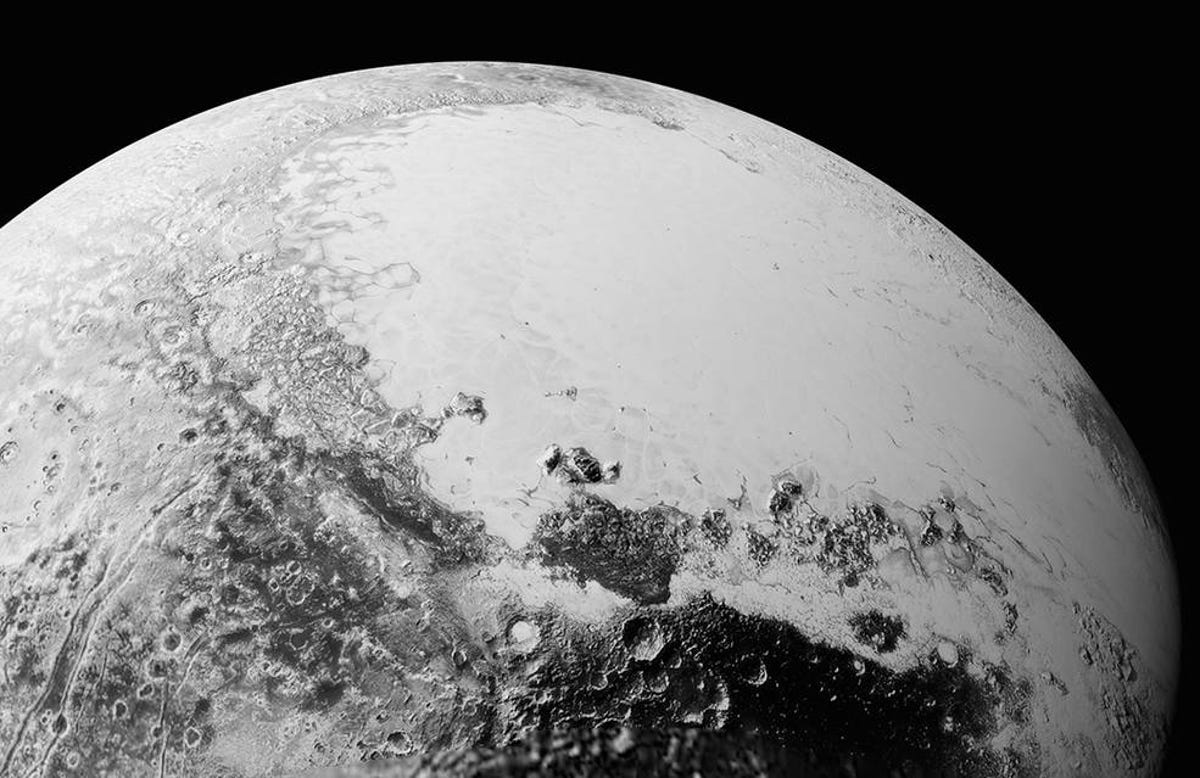Pluto, you so crazy (pictures)
NASA's New Horizons spacecraft sent back a series of Pluto close-ups showing some strange happenings on the surface.

Pluto's 'Cthulhu' region
NASA's New Horizons spacecraft has barely started its yearlong Pluto data dump and we already have some incredible images to peruse.
The dark and cratered part of this image is known unofficially as the "Cthulhu region." The light-colored area at the top is an icy plains region called Sputnik Planum.
This view is equivalent to being 1,100 miles (1,800 kilometers) above Pluto's equator.
Pluto's diverse surface
Scientists are wowed by new images sent back by the New Horizons spacecraft following a July 14 flyby of the dwarf planet. It will take a year for all the data to be delivered, but NASA is already poring over and releasing fresh close-ups.
This image covers a 220-mile (350-kilometer) wide area of Pluto. It highlights ancient cratered areas next to smoother, younger regions. The ridged area in the center may be a series of dunes.
Icy plains abound on Pluto
This mosiac is composed of images sent back by NASA's New Horizons spacecraft in early September as part of a major data downlink that will take a year to complete.
The smooth, light area in the center is known unofficially as Sputnik Planum and is a large area of icy plains.
Pluto's moon Charon shines
NASA's New Horizons spacecraft didn't fly millions of miles just to stare at only Pluto. It also took time out to capture images of its moons, including Charon.
Charon is Pluto's largest moon. This detailed image was taken during New Horizons' closest approach to the dwarf planet. Charon is 750 miles (1,200 kilometers) in diameter and shows both smooth terrain areas and a network of surface fractures.
Atmospheric haze on Pluto
Scientists know a lot more about Pluto's atmosphere thanks to a new set of images taken of the dwarf planet.
NASA explains: "This image of Pluto from NASA’s New Horizons spacecraft, processed in two different ways, shows how Pluto’s bright, high-altitude atmospheric haze produces a twilight that softly illuminates the surface before sunrise and after sunset, allowing the sensitive cameras on New Horizons to see details in nighttime regions that would otherwise be invisible."
Pluto's haze layers
While many images were taken on the way to New Horizons' closest approach to Pluto, the spacecraft also delivered some fascinating looks back. These pictures of Pluto's dark side were captured 16 hours after the close approach from 480,000 miles (770,000 kilometers) away.
The right-hand image has been processed to highlight the layers of haze in Pluto's atmosphere.
Chaotic terrain on Pluto
This image from NASA's New Horizons spacecraft was taken during a flyby on July 14. It shows an area 300 miles across filled with chaotic terrain NASA describes as "jumbled." The dramatic surface features were seen when New Horizons was at a distance of 50,000 miles (80,000 kilometers) away.
Pluto in enhanced color
An enhanced color image of Pluto was released by NASA on August 12. It's a combination of four images taken by the New Horizons' spacecraft. Pluto's "heart" is evident in the lower right hand area of the dwarf planet.
New Horizons is near the start of a yearlong data downlink that will send more detailed images back to Earth.

